Insta360 One R 1-inch edition
Two-minute review
Insta360 is one of GoPro's biggest rivals in the action cam world – and the Insta360 One R 1-inch Edition fills a hole that GoPro has, so far, left empty.
This version of the modular Insta360 One R has a large 1-inch sensor, just like the Sony RX0 II. But unlike the Sony, the Insta360 One R 1-inch Edition has very good stabilization and a menu system that does not seem as if it has been transplanted from a DSLR.
The Insta360 One R 1-Inch edition's low-light ability is greater than a GoPro Hero 9 Black’s and its native dynamic range is better than just about any other action camera.
This is because its 1-inch sensor has around four times the light-gathering powers of rivals that have 1/2.3-inch sensors, including all GoPro Hero Black models. The result is that, in both its 5.3K//25p and 4K/60p modes, the One R 1-Inch edition produces sharp, punchy videos.
Its still images are very impressive too, giving you shots that are a cut above those from rivals like the GoPro Hero 9 Black. This is true of both JPEGs and raw files, which give the option of pulling stacks of detail from the shadows without too much resulting noise.
But it's not a complete win for image quality. The Insta360 One R 1-inch edition is also prone to producing some shimmer and fizz in highly-detailed areas, and GoPro's processing is more impressive overall.
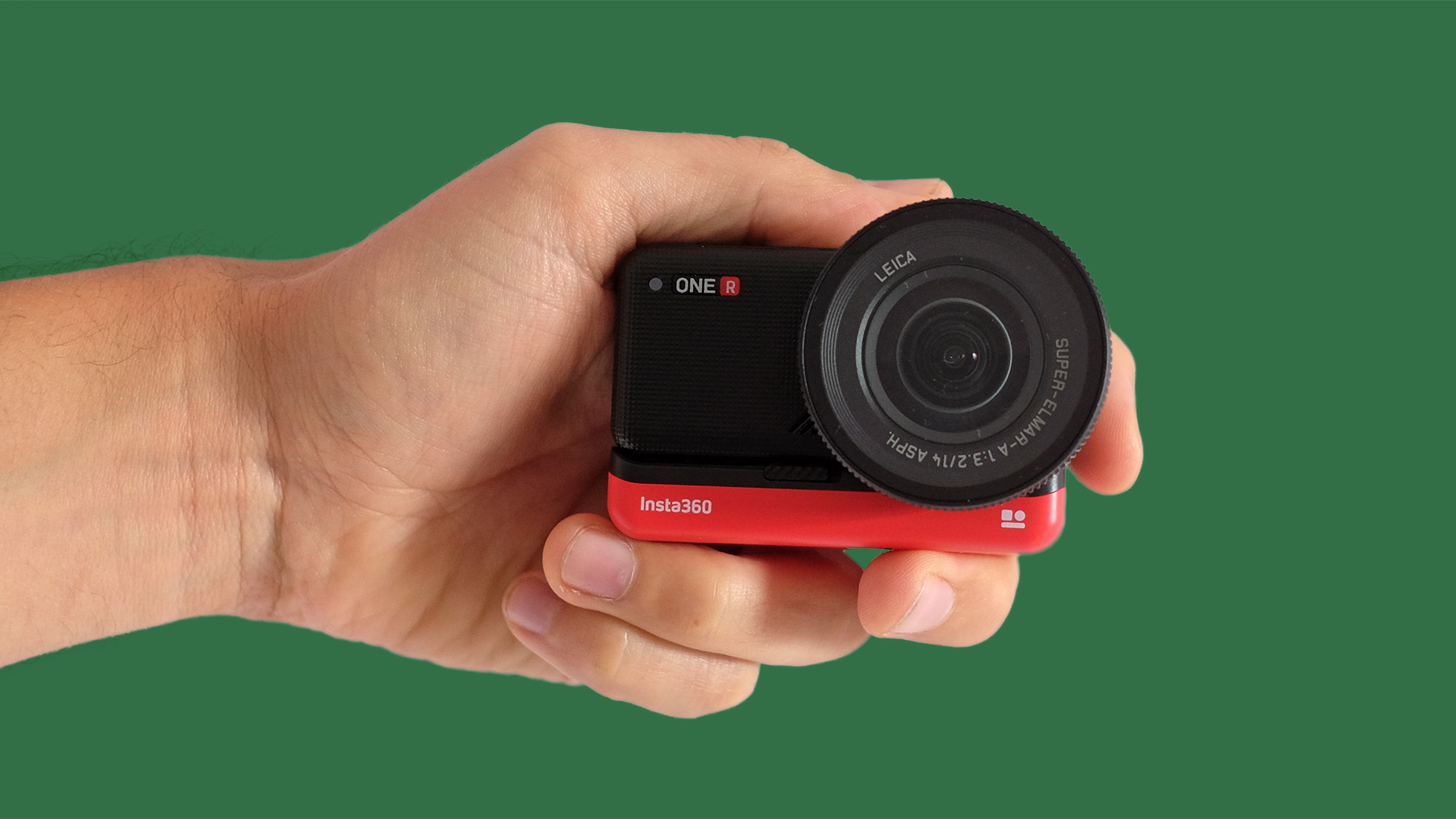
In general, GoPros like the Hero 9 Black are also that bit more fun and simple to use, with Insta360's app and desktop software a bit sluggish when it comes to processing clips. By comparison, we missed the point-and-shoot simplicity of GoPro cameras, while the familiar shortfalls in image processing leave you wondering what GoPro could do with a sensor like this.
Still, if you're prepared to put up with these slight niggles and frustrations, there's no doubt that the Insta360 One R 1-Inch Edition produces some of the best video and photos you can get from an action camera.
- Don’t miss our original Insta360 One R review for more hardware impressions.
Insta360 One R 1-inch edition price and release date
The Insta360 One R 1-inch Edition is part of a modular family of action cameras. We reviewed the 4K version of the One R in early 2020, and the 1-inch sensor module was announced at the same time as the 4K one.
It took a while to reach the TechRadar test bench, but you can buy the camera right now – either as a 'Mod' accessory, or with the camera body as part of the 1-Inch Edition.
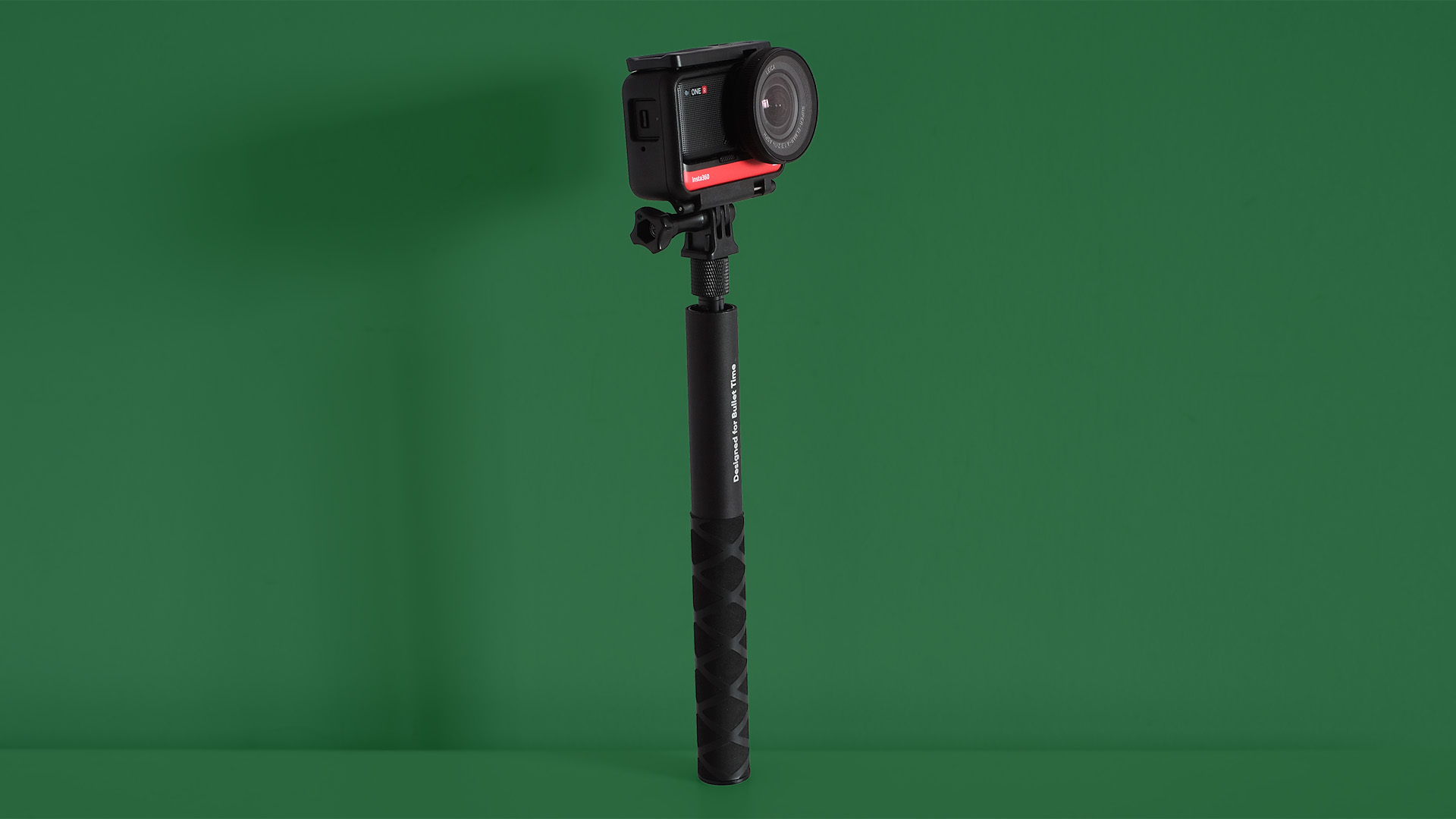
Buying the latter, which includes the 1-Inch module and Insta360 One R camera (including the battery and core processing module), costs $549/ £519/ AU$870. But if you already have the Insta360 One R camera, you can also buy the 1-inch 'mod' alone for $299.99 / £279.99 / $489.99.
Design
Your first reaction to the Insta360 One R 1-inch Edition may be the same as ours: wow, that’s a big lens.
However, it's the lens protector that makes it appear huge. This can be unscrewed, revealing the lens glass underneath, which isn’t much bigger than the Insta360 One R’s 360-degree mod.
Why so big? The protective glass needs to extend beyond the lens itself thanks to its wide angle field of view, and the gap between lens glass and lens protector. And Insta360 probably wants it to look very serious and professional, too.
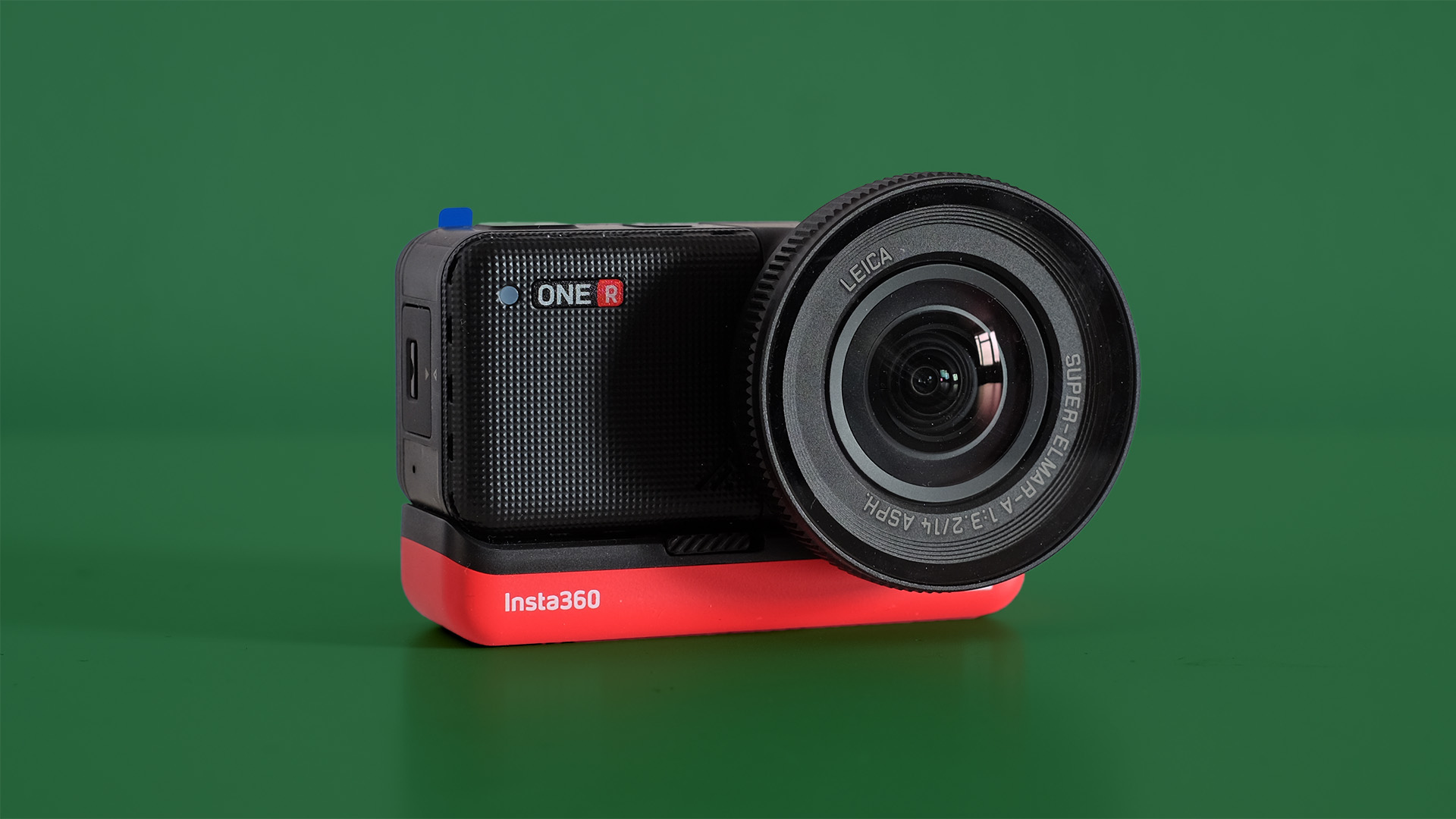
The actual 1-inch mod itself is only slightly larger than the One R’s 4K one. There’s a little bump at its backside, extending a few millimeters beyond the screen block. It proves, much like the Sony RX0 II, that one-inch sensor action cameras do not have to be huge.
New to the Insta360 One R family? The battery, the part with the screen/controls and the lens/sensor all live in separate blocks. You squish them together, and a clip-on the battery keeps everything in place.
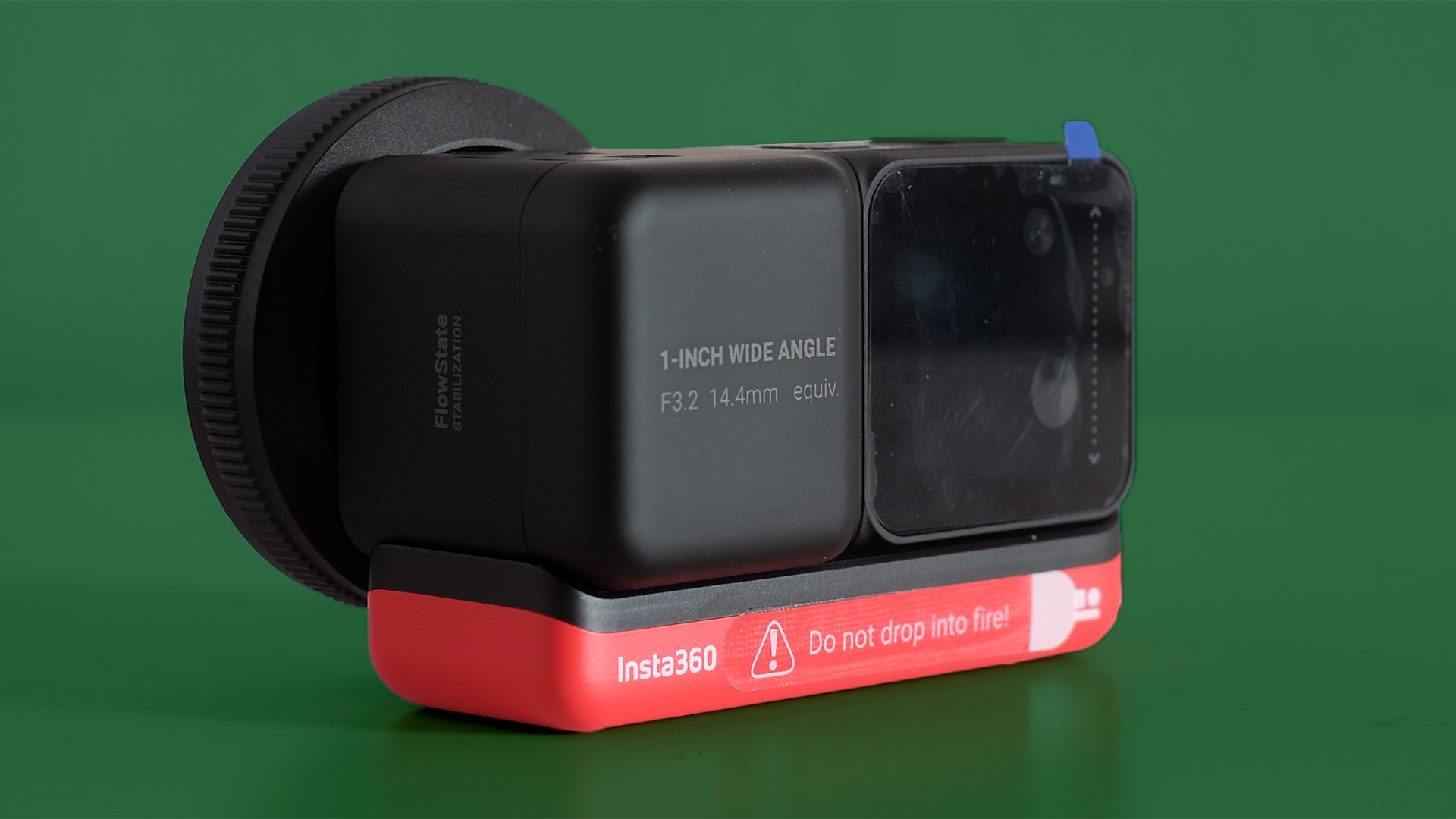
You’ll need to use the housing if you want the official 5m waterproofing to count. But all the case really does is to keep all the joints tight. It doesn’t add any more rubber seals.
As we noted in the Insta360 One R review, the software here isn’t always the smoothest and the screen is too small (and too square) to make for comfortable composition. But it’s much better than nothing.
Stabilization
Insta360’s stabilization is called FlowState and is the company's equivalent of GoPro’s HyperSmooth.
It’s great, as we found in the Insta360 One R 4K and Insta360 Go. Use the near-native ultra-wide field of view and you’ll still see some motion judder, but the more crop you allow, the smoother it gets. The default 'wide' view is already very smooth even when dealing with the hard motion of running.

The benefits of the Insta360 One R 1-inch Edition’s large sensor come in handy here, too. Use the narrowest field of view in most action cameras and the image will often look quite soft. This is no surprise, as it’s just digital zoom with a bit of geometric correction applied. But the 1-inch sensor handles the crop far better than most, even if there’s actually no more appreciable detail than a crop of the native ultra-wide view, when you dig deep and analyze the frame.
How about low light? No amount of GoPro processing charm can surmount the difference in sensor size between this camera and the GoPro Hero 9 Black. The Insta360 One R 1-inch Edition's low light video is far better than the GoPro’s. It’s brighter, cleaner and more detailed.
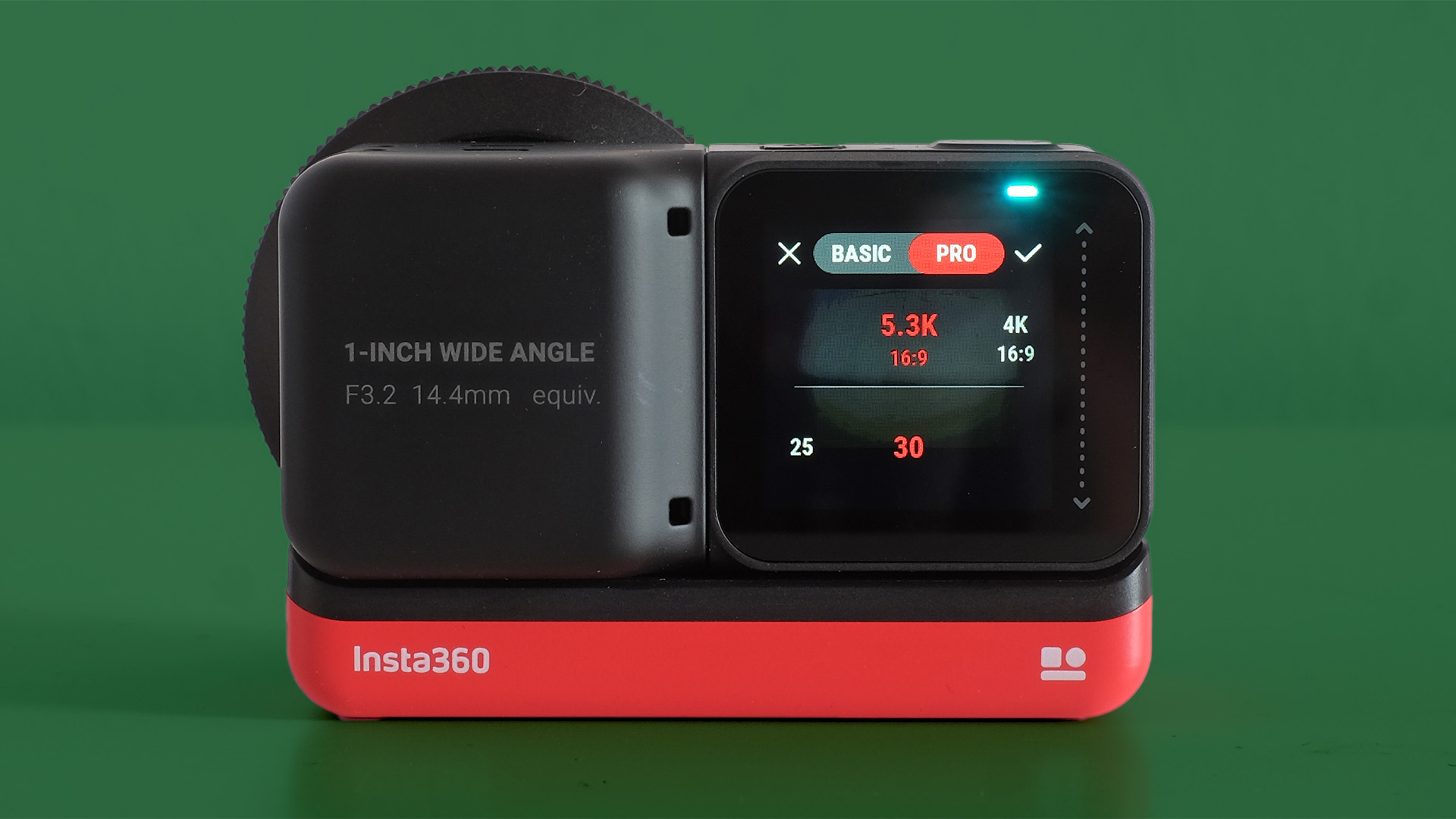
However, set your expectations correctly. Some high-end phones can still shoot better video, even with smaller sensors. In a wider sense, the Insta360 One R’s night video still sucks.
Just because the Insta360 One R has a large sensor, it does not instantly make it a camera you would use to shoot an indie film, using only shoestring lights you bought off eBay.
Shooting modes
The Insta360 One R has the two additional video modes you’d expect from a higher-end action camera: Timelapse and Timeshift. And the latter is more fun to use.
Timeshift increases motion to 16x, for a 'fast forward'-style effect you could use for a quick tour of sights when on holiday.
Once again, the processing involved here happens in the phone app or Insta360 Studio. This is a pain because 4K clips that end up as a minute long take an age to export, whatever platform you use. It still involves processing a lot of video, because it’s created using standard-speed footage. The 16x effect happens in the edit.
The results are good, though. A neat optional motion blur effect fits the image data from several frames into each frame in the final clip, adding visual drama.
On the other hand, Timeshift is a headache compared to GoPro’s TimeWarp. This mode now auto-edits speed changes into the footage based on the relative rate of motion, and you can preview the results right on the camera. But you still have to wait 30 minutes or more on your laptop for the final file to be rendered.
Stills provide no such headaches, apart from the odd time the Insta360 crashed when shooting them. And as we'll see, the 1-inch sensor's still photo quality is a cut above the GoPro Hero 8 Black or 9 Black.
Video and photo quality
Superior image quality is the sole reason to buy the Insta360 One R 1-inch Edition over cheaper alternatives, like those you can find in our guide to the best cheap action cameras.
Almost all half-decent action cameras have 1/2.3-inch sensors, including all GoPro Hero Black models. These sensors are around a quarter of the size of a one-inch chip. Four times the light-gathering space gives a camera better dynamic range and low-light ability, while introducing the practical issues of a larger sensor chip and larger lens elements.
As you can see, Insta360 has nailed the size issue, if you’re not put off by the huge protective cover.
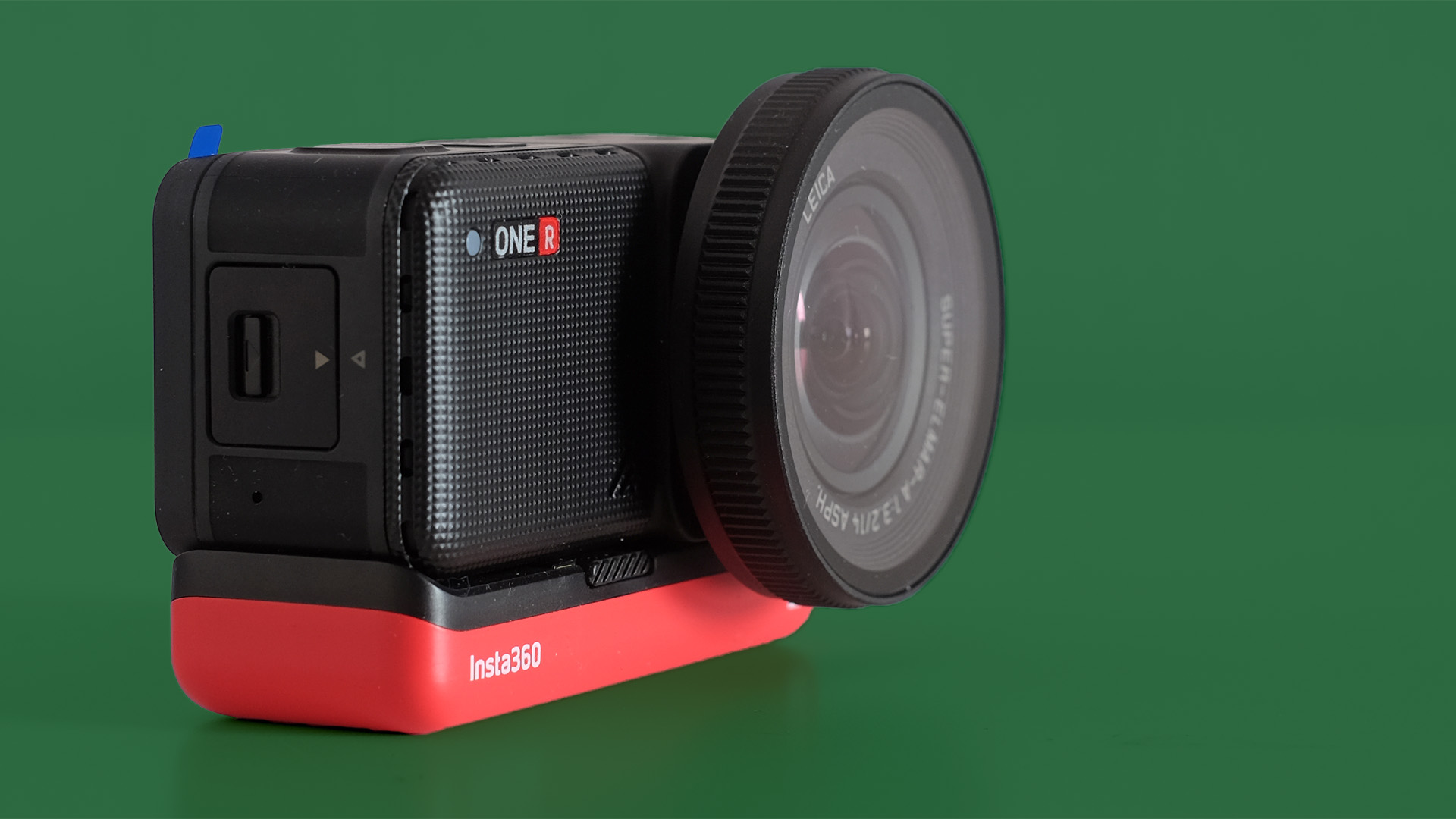
Analyze a Insta360 One R 1-inch Edition still from a 4K video alongside one taken with the 4K mod, and the difference is obvious. When shooting into bright clouds with the sun in view you’ll still see similar minor clipped highlights, because they use similar exposure processes, but the areas of shadow are brighter, cleaner and far more detailed in the 1-inch sensor image.
The 4K mod has lower resolution than the 1-inch one too, 12MP compared to 19MP, but the difference in detail in shadow areas is down to the sensor size more than sensor resolution.
So what does this mean for video? The Insta360 One R 1-inch Edition can shoot at up to 5.3k/25p, or 4K at up to 60 frames per second. And the punch and detail fidelity you get from either of these modes when shooting in bright sunlight is superb.
Footage is contrasty and sharp, with relatively little loss of detail at the corners of the frame compared to the wide-angle camera of a phone.
There’s also much less of one issue that put us off the otherwise very good Insta360 Go, and the 4K mod. Those cameras visibly lose contrast and color fidelity as soon as you head under tree cover. It’s not a true 'low light' scene, but it still causes action cameras problems.
The Insta360 One R 1-inch Edition holds onto its image punchiness far better, and is less prone to in-frame blurring. Most action camera footage turns mushy as soon as the light level drops a little. One reason why GoPro has stayed dominant for so long is because it hangs onto its image quality for dear life in difficult conditions – and the Insta360 One R 1-inch Edition holds up as well, without the distressed fingernails.
One classic Insta360 problem remains, though. Take some footage while running or cycling along a path and you may see the gravel detail seem to fizz away in the distance in the final file.
Look at the results frame by frame and you’ll see why. Insta360’s processing will happily let one frame contain a lot more localized fine texture detail than the next, the noise reduction algorithm flip-flopping over whether it’s detail or noise 30 times a second.
This happens no matter the light conditions, and is actually more obvious in bright sunlight. This is where the Insta360 One R 1-inch Edition produces the most fine detail through the frame, shining a light on that border between 'noise' and 'detail' all the more clearly.
GoPro has more robust processing than Insta360, and the GoPro Hero 8 Black and GoPro Hero 9 Black are nowhere near as susceptible to this detail shimmer and fizz. The Insta360 app, which you use to export clips, does have a “remove noise” mode, but this does not seem to help matters.
So, is the Insta360 One R 1-inch Edition a dud? No. This image issue is only clear when there’s a lot of camera motion – in other words, it is scene specific, and other aspects of motion handling are good.
When it comes to stills, the 1-inch sensor’s shots are miles ahead of those of a GoPro Hero 8 Black or 9 Black, too.
Even when using the camera’s standard JPEG processing there’s far more coherent detail at dusk. And image quality leaps to another level when you capture DNGs instead and use Lightoom or Photoshop for the processing.
It’s here you really see what the 1-inch sensor is capable of. You can pull stacks of detail out of the shadows, complete with robust color, without ending up with a noisy mess.
Workflow
The Insta360 One R’s workflow considerations are definitely worth bearing in mind, too. To get the best results from this camera you’ll need to import and then export the files through either Insta360’s mobile app or Insta360 Studio for Windows/MacOS.
These perform much of the image processing and stabilization. While there are a handful of popular presets that allow for true in-camera stabilization (at up to 4K, 25fps) you’ll still see the best results when you outsource the work to your computer or phone.
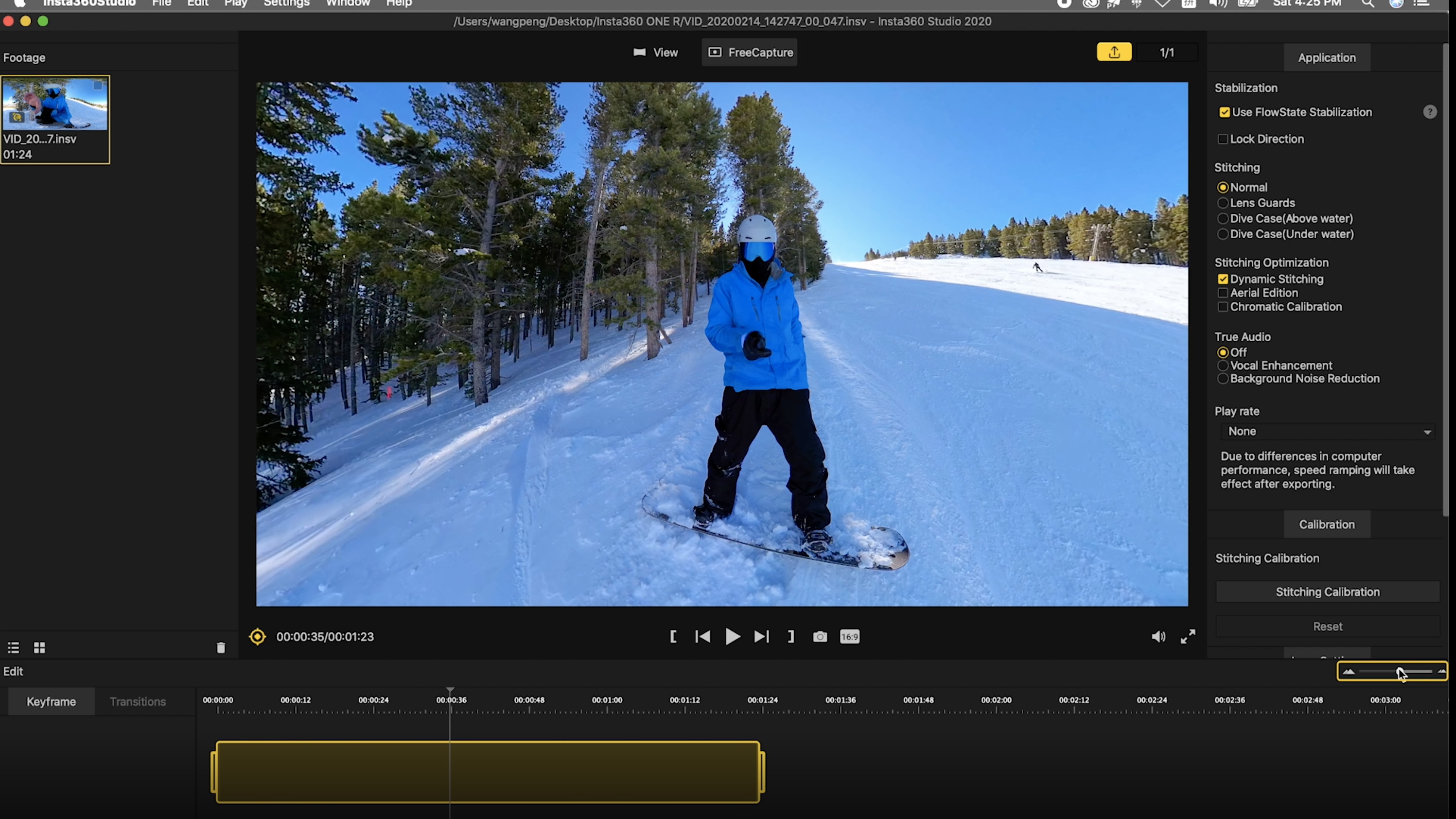
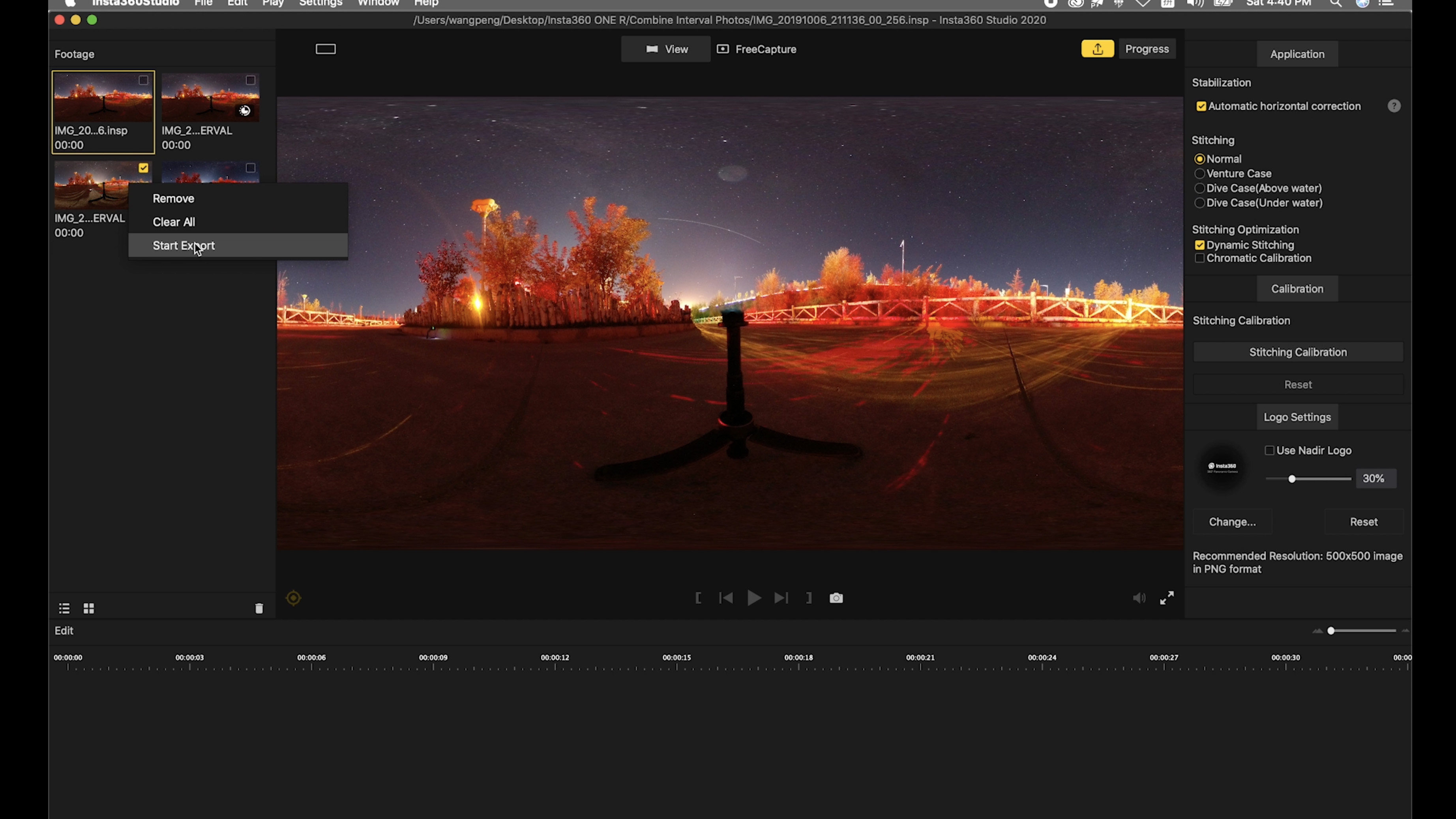
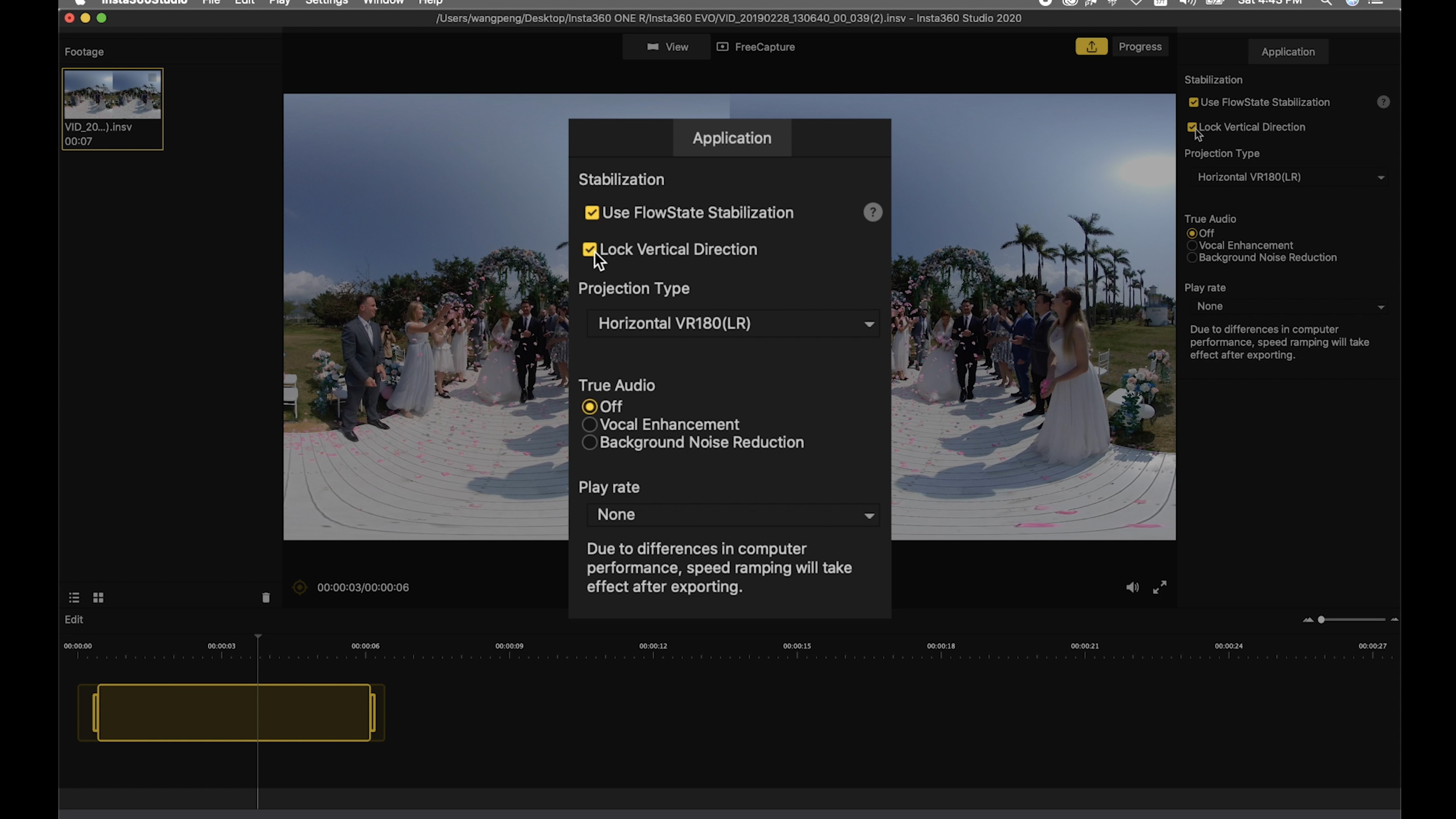
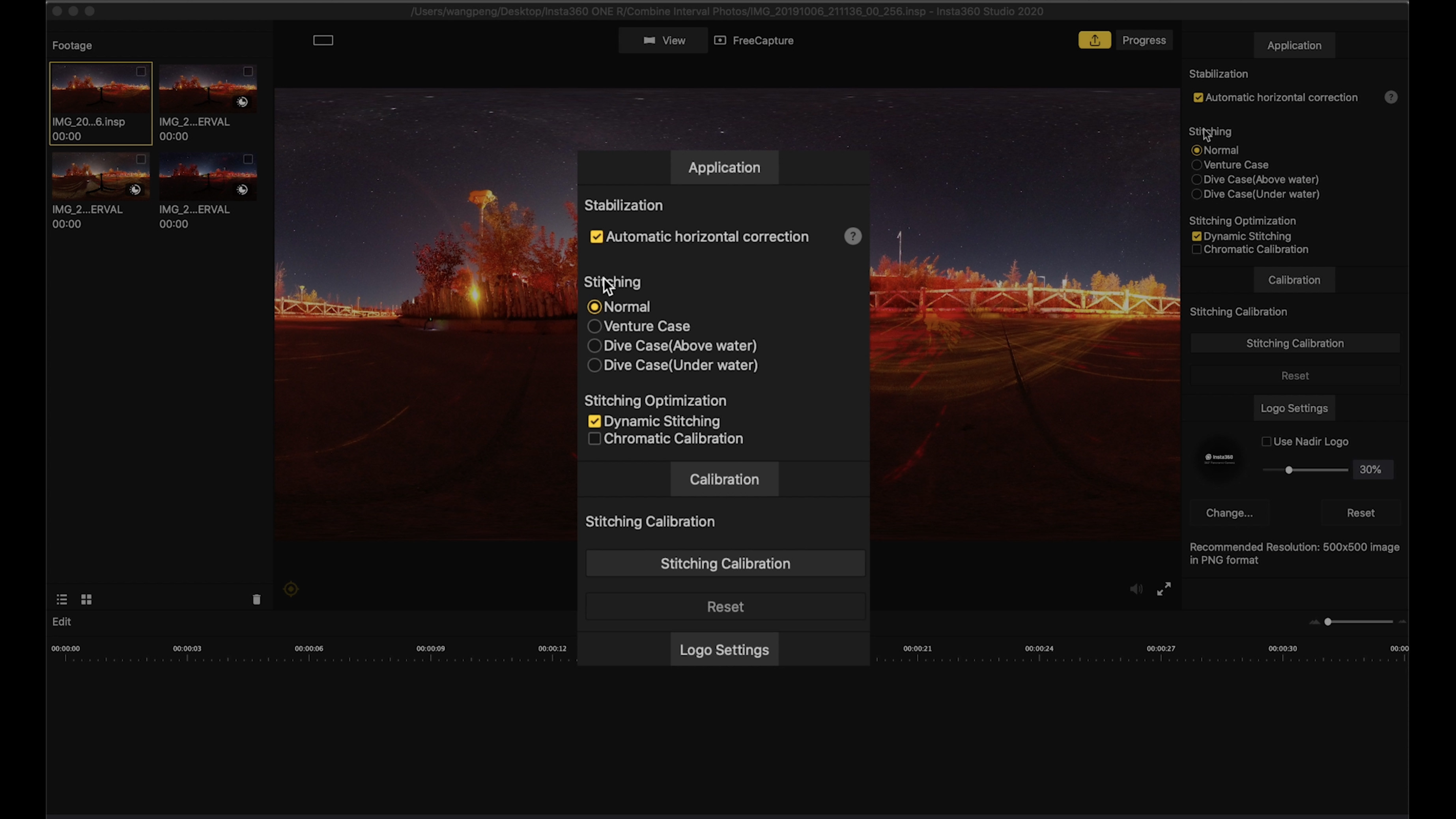
The hurdle here is the time it takes. On a recent mid-range phone you'll be left waiting for what can feel like an eternity for any clips longer than 30 seconds.
A powerful laptop improves matters, but 4K time-lapse clips still take a lot of time to spit out. The Insta360 One R makes us miss the 'shoot and go' simplicity of the GoPro cameras, and highlights how special it is that they perform real feats of stabilization and general image processing in-camera, on the fly.
This is all the more important if you want to be able to do everything quickly from your phone: process, edit and post to Instagram (or your platform of choice). All footage on the camera is shot using H.264: no worries about playback compatibility, but it chews through microSD card space.
Audio and battery life
The Insta360 One R has a stereo mic array, using one pinhole mic on the top of the control module, and another on its side.
Microphone positioning and performance is, predictably, affected by the One R's modular design. While recorded audio is clear, the GoPro Hero 8 Black and Hero 9 Black provide much better positional representation of an environment’s sounds.
Dynamic range of the GoPros is better too, with greater bass depth, and the Insta360 has a noise bed that is quite noticeable if you shoot in a quiet environment.
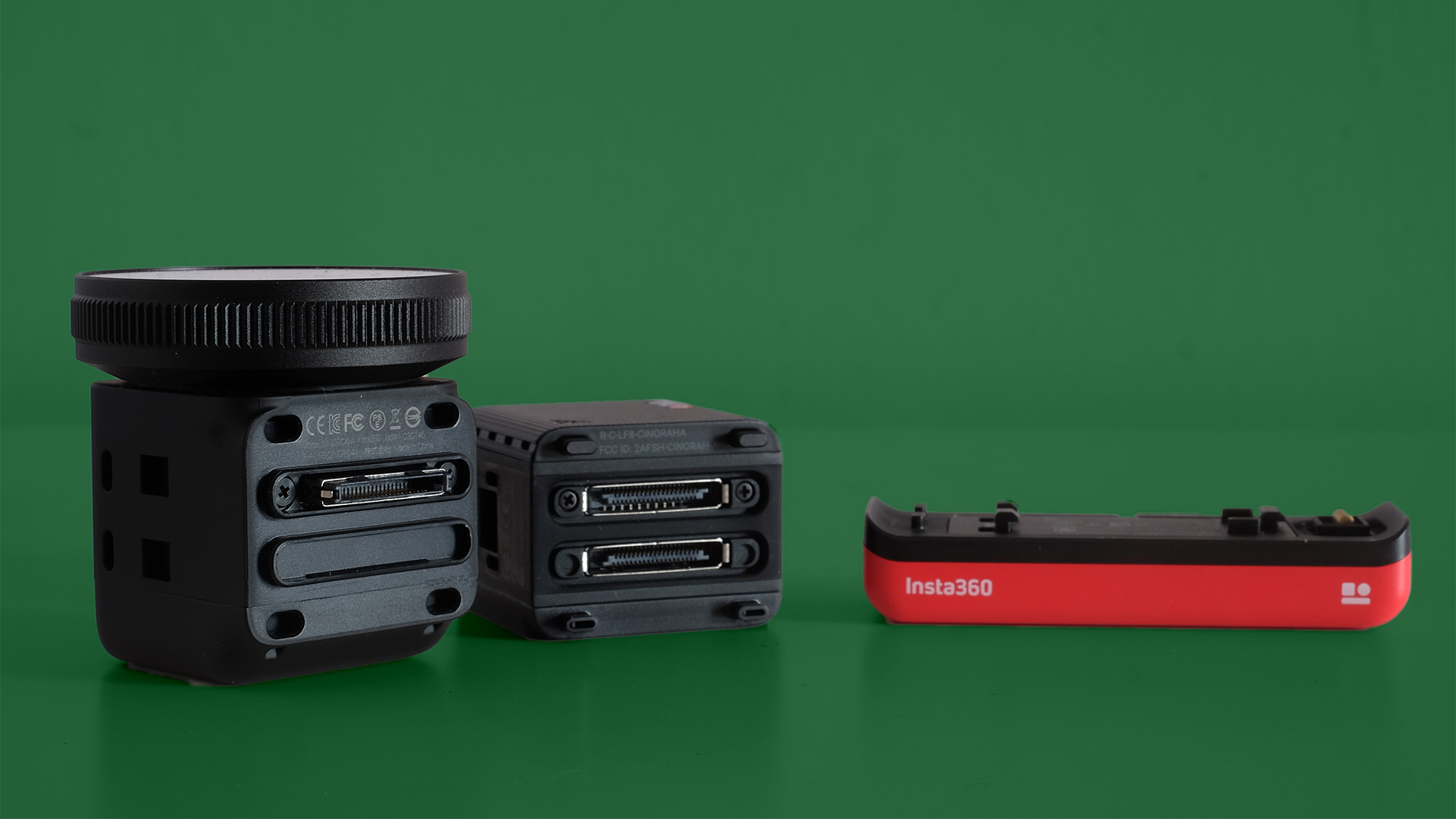
Of course, if you’re interested in the higher-fidelity images of the 1-inch sensor module, you’ll probably want to use an external mic anyway. Insta360 makes a 3.5mm mic adapter for the One R – this plugs into the USB-C port and is pretty affordable at $9.99 / £11.99 / AU$16.99.
However, you’ll also want the housing with a cold shoe mounting bracket ($19.99 / £21.99 / AU$48). The one that comes in the box doesn’t have any form of extra mount, because it’s there for the average action cam buyer who uses the built-in microphones.
Use the Insta360 One R with the standard 4K camera module and it is rated for 75 minutes of video capture. This drops to 65 minutes when using the 1-inch sensor cam.
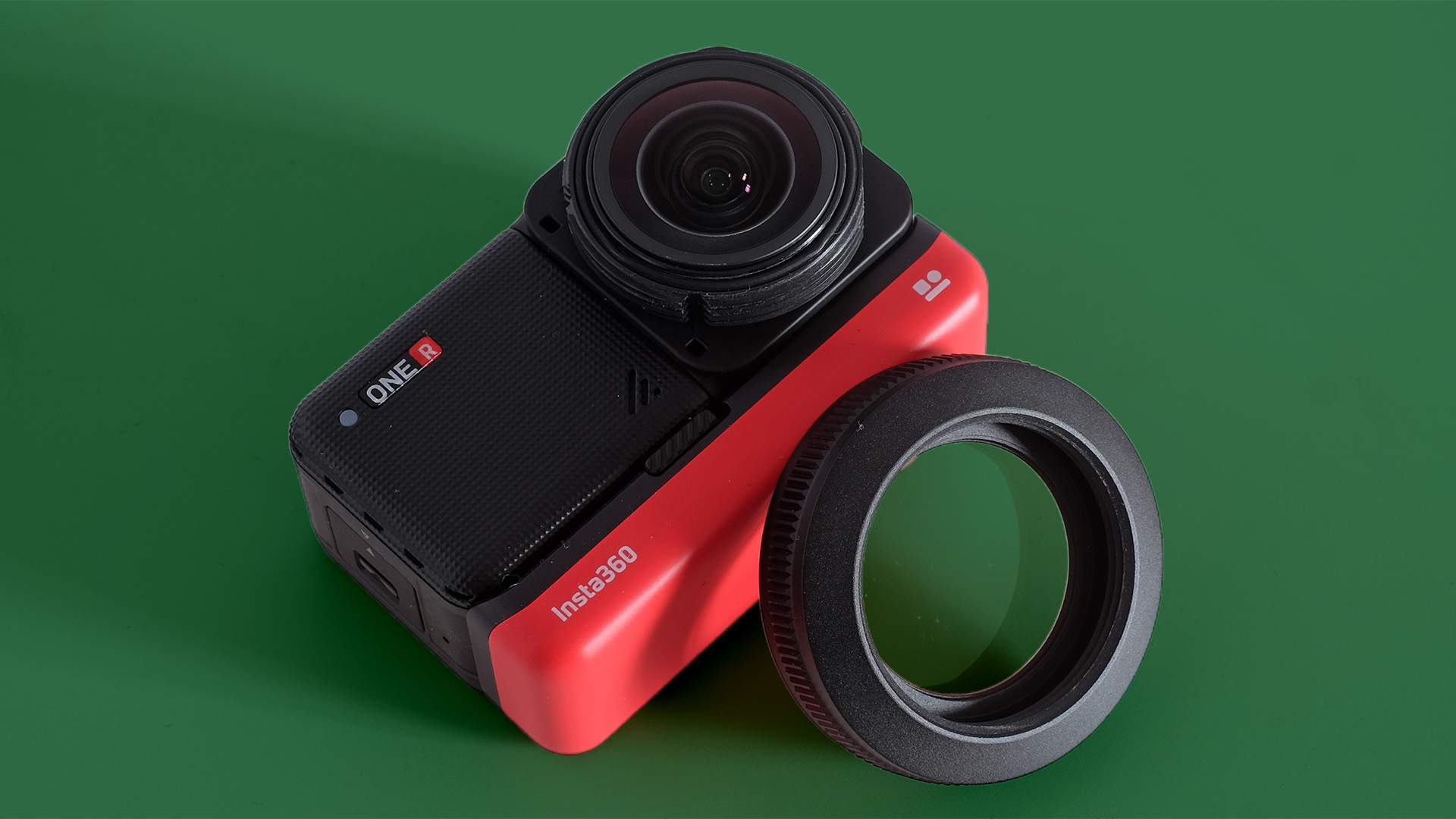
We captured less than 65 minutes of video from a charge, but only because that involved shooting over a couple of days and a whole stack of clips. And plenty of faffing about with the menus in between.
We’re also glad to see that even though the Insta360 One R’s battery is a whole 'module' rather than a relatively naked cell, extra units aren’t too expensive. You’ll pay $30/£30/AU$50 for one, compared to around $20/£20/AU$35 for a GoPro battery.
Insta360 makes a handy little fast charger dock that tops up two of the batteries at once, too – you can pick this up for $43/£43/AU$69.99.
Should I buy the Insta360 One R 1-inch edition?

Buy it if...
You want an action camera for high-quality stills
A 1-inch sensor and support for raw image capture mean this action camera has real potential as a stills camera. It can take beautiful photos if you take time to handle the image processing yourself. And Insta360’s JPEGs are perfectly fine for most uses, too.
You’re more about film-making than action shooting
Slower, more controlled motion lets this camera’s 1-inch sensor shine. Stick to a GoPro or the One R’s 4K camera for fast action, but there are benefits if you want a wide (or just small) camera to help you make short films.
You buy into the modular idea
The 1-inch sensor version of the One R isn’t cheap, but this system lets you use the same battery and brain for a smaller 4K module and a 360-degree one. And neither of those is that expensive next to this 1-inch mod.
Don't buy it if...
You want quick shooting and editing
Only a few One R settings offer true in-camera stabilization. And to get the full effect of Insta360’s FlowState smoothing you need to import clips to an app on your phone or laptop. This is far from instant, and can take a small age for longer clips. Consider the impact on your workflow.
You expect massively GoPro-beating quality during the day
There are several facets to action camera image quality, and the 1-inch sensor does not affect them all directly. We don’t think the One R’s video is obviously superior to the GoPro Hero 8/9 Black’s in daylight, no thanks to a few little issues with how its imaging engine handles far-away detail. The 9 Black’s “Boost” stabilization is better too.
You need a large screen to compose shots
The screens on action camera rivals like the DJI Osmo Action and GoPro Hero 9 Black aren't huge, but they are bigger than the 1.3-inch postage stamp on the Insta360 One R. It's a little too small and square for easy composition, though that's not such an issue if you're fairly confident when framing shots.
- These are the best action cameras you can buy right now
0 comments:
Post a Comment